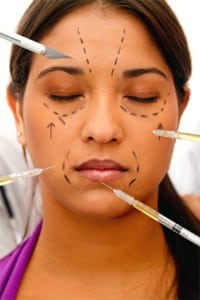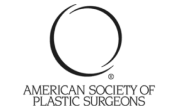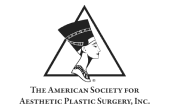
Nonsurgical treatments like dermal fillers have become a popular treatment option for many patients in recent years. In fact, many are trading their plans for surgeries like a facelift in favor of this less invasive option. Despite the straightforward procedure and the lack of recovery time, dermal fillers are still an elective procedure that involves making changes to the face. Just like any other treatment, they can pose some risks to patients, but what are they? Are dermal fillers really a safer option?
All About Dermal Fillers
Dermal fillers are a nonsurgical procedure used to rejuvenate the appearance of the face by diminishing the visibility of fine lines and wrinkles. Fillers seek to “fill” the treatment area, plumping up the skin to look smoother and more youthful. Dermal fillers can also be used to restore lost volume to key areas of the face, such as the lips, cheeks, chin and the hollows beneath the eyes. Doing so can reverse the damage of aging and leave your facial contour looking more natural and much younger than before.
Dermal fillers offer both an effective treatment option and a whole host of other benefits to patients. They are quick, affordable and effective, requiring virtually no recovery time at all. Many patients of dermal fillers are able to resume their daily activities right away, with only some minor redness and tenderness around the injection site. Many such treatments last around six months or more, so repeat treatments are needed to maintain your results.
The Side Effects of Dermal Fillers
All procedures carry some side effects and dermal fillers are no exception. During a typical injection, the patient may experience a sensation similar to the pinch of a bug bite, which may appear red and a little swollen afterwards. This is a very normal reaction to the treatment and it will go away on its own after a couple of days. Cold packs can help to reduce any swelling and soothe any tenderness you may feel in the area.
Other side effects, though rare, have occurred in patients of dermal fillers, including:
- Allergic reactions to the filler agent itself.
- The formation of tiny bumps beneath the skin, a condition that is most often temporary.
- The death of nearby skin cells, often the result of fillers that are poorly administered.
- Poor results, another side effect of an inexperienced clinician.
It’s important to note that choosing your facial plastic surgeon wisely can prevent many unwanted side effects of dermal fillers. A board certified and experienced surgeon is your best choice to ensure that your treatment is handled well. He or she will be able to design a customized procedure that optimizes your natural facial contours and characteristics, while also being sure to administer your injections safely and properly.
Looking at the Various Types of Dermal Fillers
There are several types of filler agents available today, each with an ideal usage and treatment area. An experienced plastic surgeon will be able to recommend a type of filler based on your needs, optimizing your final results. Some of the biggest brands available today include Restylane, Juvederm, Radiesse and Artefill.
Both Restylane and Juvederm are hyaluronic acid fillers, made from a natural sugar found in the skin. Some hyaluronic acid fillers are derived from animals, making patients with allergies to animals at a higher risk of post-treatment reaction. However, many of today’s fillers are made from synthetic materials and therefore less likely to trigger a reaction. Restylane is a soft, granulated filler that is most effective in plumping the lips and lower eyelids, lasting up to eight months. Juvederm has a smoother texture and can be used as an all-purpose filler that lasts up to one year.
Radiesse is a hydroxylapatite filler so it is both biocompatible and synthetic in nature. Its firm texture makes it an ideal treatment for the nasolabial folds, the wrinkles that form around the nose and mouth. It can also help around the jawline, at the corners of the mouth, and in the chin. Radiesse treatments will last up to two years, provided you receive a touch-up injection one month after your first treatment.
Finally, Sculptra is a synthetic material called poly-L-lactic acid, or PLA. Through a series of treatments, Sculptra can replace the lost collagen in the face to achieve natural-looking fullness and facial contour. It is biocompatible and biodegradable to provide patients with a safe treatment option that is also effective.
Start Your Dermal Fillers Now
While dermal fillers are a cosmetic procedure in their own right, they are a relatively safe and effective option for many patients. Learn more today by scheduling a consultation with Dr. Robert Kessler, a board certified general and facial plastic surgeon, to learn more about what this surgery can do for you. Dr. Kessler completed his medical degree with honors from Tufts University in Boston as well as a distinguished General Surgical Residency with North Short/NYU in New York. Prior to that, he completed a Plastic Surgery residency with the U.S. Air Force and the University of Texas.
Today, Dr. Kessler operates his surgical practice in California, has worked as a surgical consultant and surgical assistant on ABC’s Extreme Makeover, and has lectured nationally and internationally on topics including facial rejuvenation, plastic surgery, and body contouring. To schedule an appointment with Dr. Kessler, contact his office, located at 2121 E Pacific Coast Hwy #200, in Newport Beach, CA, by calling 949.644.6544.






